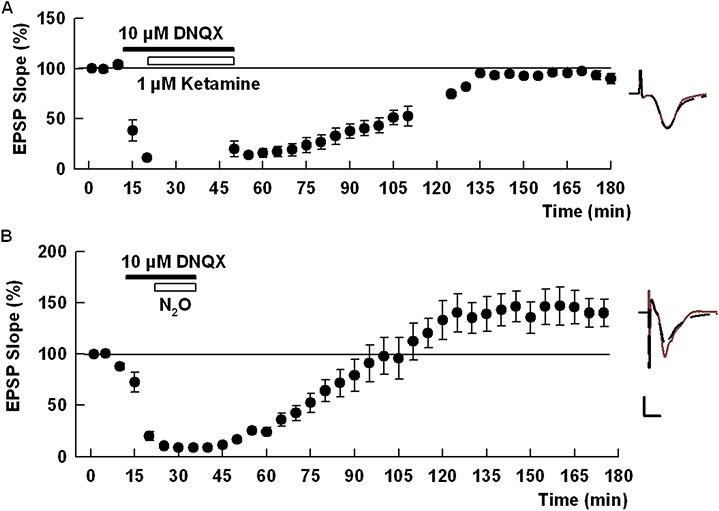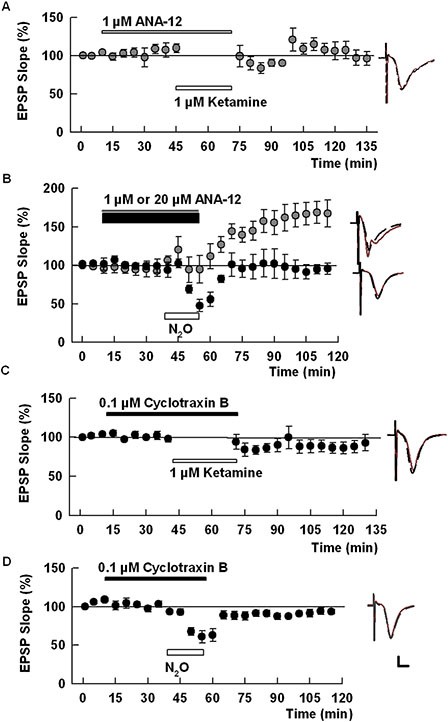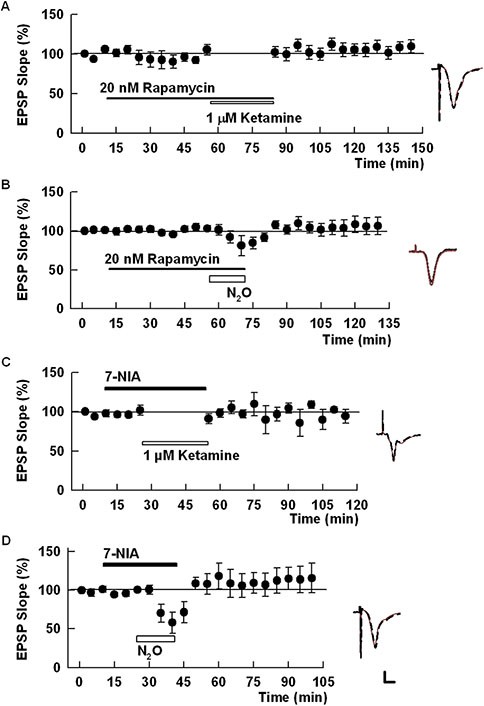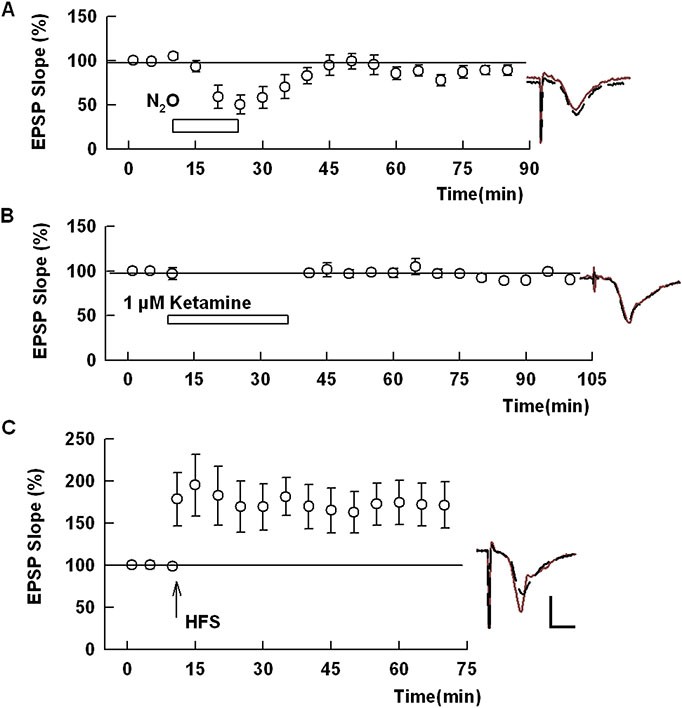Nitrous oxide, commonly known as laughing gas, is a well-known anesthetic with rapid antidepressant effects. But What Drug Is Similar To Nitrous Oxide? Discover alternatives and related substances in this guide from WHAT.EDU.VN, exploring compounds, mechanisms, and therapeutic uses. This article helps clarify the landscape of substances that share characteristics with nitrous oxide, focusing on similar mechanisms, clinical applications, and potential alternatives. Delve into analgesics, anesthetics, and mood-altering substances that share similarities with nitrous oxide, including ketamine and xenon.
1. Understanding Nitrous Oxide: A Comprehensive Overview
Nitrous oxide (N2O), often referred to as “laughing gas,” has been used in medical and recreational contexts for over a century. It’s crucial to understand its properties, effects, and applications to appreciate its similarities with other drugs.
1.1. What is Nitrous Oxide?
Nitrous oxide is a colorless, non-flammable gas with a slightly sweet odor and taste. It is primarily used for its anesthetic and analgesic effects. Medically, it is used in dental procedures, minor surgeries, and to alleviate pain during childbirth. Recreationally, it is used for its euphoric and dissociative effects.
1.2. Mechanism of Action
Nitrous oxide affects the central nervous system through multiple mechanisms:
- NMDA Receptor Antagonism: Similar to ketamine, N2O acts as a non-competitive antagonist of the N-methyl-D-aspartate (NMDA) receptor. This antagonism contributes to its anesthetic and analgesic effects.
- Opioid System Modulation: N2O interacts with the opioid system, releasing endogenous opioids that contribute to its analgesic effects.
- GABA Receptor Activation: N2O can enhance the activity of gamma-aminobutyric acid (GABA) receptors, further contributing to its sedative and anesthetic effects.
- Dopamine Release: N2O can stimulate the release of dopamine, contributing to its euphoric and mood-altering effects.
1.3. Therapeutic Uses
Nitrous oxide is utilized in various medical settings:
- Anesthesia: As an anesthetic agent, it helps reduce pain and anxiety during medical procedures.
- Analgesia: Its analgesic properties make it effective for pain management during labor, dental work, and minor surgeries.
- Treatment-Resistant Depression (TRD): Research has shown that N2O can have rapid antidepressant effects in patients with TRD.
- Palliative Care: N2O can improve the quality of life for patients in palliative care by alleviating pain and discomfort.
1.4. Recreational Use and Risks
Recreational use of nitrous oxide involves inhaling the gas to induce euphoria and dissociation. However, this practice carries significant risks:
- Oxygen Deprivation: Inhaling pure N2O can lead to hypoxia (oxygen deprivation), causing brain damage or death.
- Vitamin B12 Deficiency: Chronic N2O use can inhibit vitamin B12 metabolism, leading to neurological problems such as neuropathy and cognitive impairment.
- Psychological Effects: Some users may experience anxiety, paranoia, or hallucinations.
- Addiction: Although not physically addictive, psychological dependence on N2O can occur.
1.5. Legal Status
The legal status of nitrous oxide varies by country and region. In many places, it is legal for medical and industrial uses but regulated or prohibited for recreational purposes. Some jurisdictions have specific laws addressing the sale and possession of N2O for non-medical uses.
2. Ketamine: A Close Relative of Nitrous Oxide
Ketamine is an anesthetic with significant similarities to nitrous oxide, especially in its mechanism of action and clinical applications.
2.1. What is Ketamine?
Ketamine is a dissociative anesthetic primarily used in medicine for anesthesia and pain management. It is also used in veterinary medicine. In recent years, ketamine has gained recognition for its rapid antidepressant effects.
2.2. Mechanism of Action
Ketamine shares several mechanisms of action with nitrous oxide:
- NMDA Receptor Antagonism: Like N2O, ketamine is a non-competitive NMDA receptor antagonist. This action is believed to be central to its anesthetic, analgesic, and antidepressant effects.
- AMPA Receptor Activation: Ketamine can enhance the activity of alpha-amino-3-hydroxy-5-methyl-4-isoxazolepropionic acid (AMPA) receptors, contributing to its neuroplastic effects.
- Dopamine Release: Ketamine can increase dopamine levels in the brain, leading to euphoria and altered mood.
- BDNF Release: Ketamine promotes the release of brain-derived neurotrophic factor (BDNF), a protein that supports neuron growth and survival.
2.3. Therapeutic Uses
Ketamine has diverse therapeutic applications:
- Anesthesia: It is used as an anesthetic agent, especially in emergency situations and for short procedures.
- Pain Management: Ketamine is effective for treating chronic pain conditions, such as neuropathic pain and fibromyalgia.
- Treatment-Resistant Depression (TRD): Ketamine has shown rapid and significant antidepressant effects in patients with TRD.
- Suicidal Ideation: Ketamine can quickly reduce suicidal thoughts in individuals at high risk.
- Bronchospasm: Ketamine can act as a bronchodilator, making it useful in treating severe asthma and bronchospasm.
2.4. Side Effects and Risks
Ketamine use is associated with several potential side effects and risks:
- Dissociation: Ketamine can cause feelings of detachment from reality and altered perception.
- Hallucinations: Some users may experience visual or auditory hallucinations.
- Increased Blood Pressure and Heart Rate: Ketamine can temporarily increase blood pressure and heart rate.
- Respiratory Depression: High doses of ketamine can lead to respiratory depression.
- Addiction: Regular ketamine use can lead to psychological dependence and addiction.
- Bladder Problems: Chronic ketamine use can cause bladder damage and urinary problems.
2.5. Legal Status
Ketamine is a controlled substance in many countries, with its use regulated for medical purposes. Unauthorized possession or distribution of ketamine is illegal.
2.6. Ketamine vs. Nitrous Oxide
While ketamine and nitrous oxide share NMDA receptor antagonism and some clinical uses, they differ in several aspects:
| Feature | Ketamine | Nitrous Oxide |
|---|---|---|
| Primary Use | Anesthesia, pain management, TRD | Anesthesia, analgesia, TRD |
| Mechanism | NMDA antagonist, AMPA activation, dopamine release, BDNF | NMDA antagonist, opioid modulation, GABA activation |
| Duration of Effect | Longer (30-60 minutes) | Shorter (2-5 minutes) |
| Side Effects | Dissociation, hallucinations, bladder problems | Oxygen deprivation, B12 deficiency, psychological effects |
| Addiction Potential | Higher | Lower |







3. Xenon: An Inert Gas with Anesthetic Properties
Xenon is another inert gas that shares some similarities with nitrous oxide and ketamine in terms of anesthetic and neuroprotective effects.
3.1. What is Xenon?
Xenon is a colorless, odorless, and tasteless noble gas. It is chemically inert and found in trace amounts in the Earth’s atmosphere.
3.2. Mechanism of Action
Xenon’s anesthetic and neuroprotective effects are attributed to several mechanisms:
- NMDA Receptor Antagonism: Similar to N2O and ketamine, xenon acts as a non-competitive NMDA receptor antagonist.
- Calcium Channel Modulation: Xenon can modulate calcium channels, reducing neuronal excitability and protecting against excitotoxicity.
- Neuroprotection: Xenon has shown neuroprotective effects in preclinical studies, reducing brain damage after stroke and traumatic brain injury.
3.3. Therapeutic Uses
Xenon has potential applications in various medical fields:
- Anesthesia: It can be used as an anesthetic agent, providing effective pain relief and sedation.
- Neuroprotection: Xenon has potential as a neuroprotective agent, reducing brain damage after neurological injuries.
- Treatment-Resistant Depression (TRD): Preliminary research suggests xenon may have antidepressant effects in patients with TRD.
3.4. Side Effects and Risks
Xenon is generally considered safe, but some potential side effects and risks include:
- Cost: Xenon is expensive to produce and administer, limiting its widespread use.
- Respiratory Depression: High concentrations of xenon can cause respiratory depression.
- Equipment Requirements: Administering xenon requires specialized equipment and trained personnel.
3.5. Legal Status
Xenon is legal for medical and industrial uses in many countries. Its use as an anesthetic agent is approved in some regions.
3.6. Xenon vs. Nitrous Oxide and Ketamine
Xenon offers some advantages over N2O and ketamine:
| Feature | Xenon | Nitrous Oxide | Ketamine |
|---|---|---|---|
| Primary Use | Anesthesia, neuroprotection | Anesthesia, analgesia, TRD | Anesthesia, pain management, TRD |
| Mechanism | NMDA antagonist, calcium channel modulation | NMDA antagonist, opioid modulation, GABA activation | NMDA antagonist, AMPA activation, dopamine release, BDNF |
| Side Effects | Cost, respiratory depression | Oxygen deprivation, B12 deficiency, psychological effects | Dissociation, hallucinations, bladder problems |
| Neuroprotection | Yes | No | Limited |
4. Other Drugs with Similar Effects
Several other drugs share some overlapping effects with nitrous oxide, although their primary mechanisms and uses may differ.
4.1. Diethyl Ether
Diethyl ether is an anesthetic that was widely used in the past. It produces anesthesia through GABA receptor potentiation and NMDA receptor antagonism. However, it is flammable and can cause nausea and vomiting, limiting its current use.
4.2. Propofol
Propofol is a sedative-hypnotic agent commonly used for anesthesia and sedation. It primarily acts by enhancing GABA receptor activity. While it doesn’t directly antagonize NMDA receptors like nitrous oxide, its sedative effects can produce similar states of reduced awareness and anxiety.
4.3. Dexmedetomidine
Dexmedetomidine is a sedative and analgesic agent used in critical care settings. It works by activating alpha-2 adrenergic receptors in the brain. Its sedative and analgesic effects can mimic some of the benefits of nitrous oxide in reducing anxiety and pain.
4.4. Opioids
Opioids, such as morphine and fentanyl, are powerful analgesics that can produce euphoria and reduce pain. While they don’t share the same NMDA receptor antagonism as nitrous oxide, their effects on the opioid system can provide similar pain relief and mood alteration.
4.5. Benzodiazepines
Benzodiazepines, such as diazepam and lorazepam, are sedative and anxiolytic agents that enhance GABA receptor activity. They can reduce anxiety and produce a state of relaxation, similar to the sedative effects of nitrous oxide.
5. Comparative Analysis of Drugs Similar to Nitrous Oxide
To provide a clear understanding of the similarities and differences, here’s a comparative table of the drugs discussed:
| Drug | Primary Mechanism | Similarities to N2O | Key Differences | Common Uses |
|---|---|---|---|---|
| Nitrous Oxide (N2O) | NMDA antagonist, opioid modulation, GABA activation | Anesthesia, analgesia, rapid antidepressant effects | Shorter duration, risk of B12 deficiency | Dental procedures, minor surgeries, TRD |
| Ketamine | NMDA antagonist, AMPA activation, dopamine release, BDNF | Anesthesia, rapid antidepressant effects, pain management | Longer duration, dissociative effects, bladder problems | Anesthesia, chronic pain, TRD, suicidal ideation |
| Xenon | NMDA antagonist, calcium channel modulation | Anesthesia, neuroprotection | High cost, specialized equipment required | Anesthesia, neuroprotection |
| Diethyl Ether | GABA potentiation, NMDA antagonism | Anesthesia | Flammable, nausea, vomiting | Historical anesthetic |
| Propofol | GABA potentiation | Sedation | No direct NMDA antagonism | Anesthesia, sedation |
| Dexmedetomidine | Alpha-2 adrenergic receptor activation | Sedation, analgesia | Different mechanism of action | Critical care sedation, analgesia |
| Opioids | Opioid receptor activation | Analgesia, euphoria | No NMDA antagonism, risk of addiction | Pain management |
| Benzodiazepines | GABA potentiation | Sedation, anxiolysis | No NMDA antagonism, risk of dependence | Anxiety, insomnia, seizures |
6. Potential Future Research Directions
The exploration of drugs similar to nitrous oxide opens up several avenues for future research:
6.1. Combination Therapies
Investigating the potential benefits of combining low doses of different NMDA antagonists, such as nitrous oxide and ketamine, to achieve synergistic effects with reduced side effects.
6.2. Neuroprotective Effects
Further exploring the neuroprotective properties of xenon and other similar agents to develop treatments for stroke, traumatic brain injury, and neurodegenerative diseases.
6.3. Novel Antidepressants
Identifying new compounds that selectively target NMDA receptors and other relevant pathways to develop more effective and safer antidepressants.
6.4. Personalized Medicine
Studying individual differences in response to NMDA antagonists to develop personalized treatment strategies for depression and other mental health disorders.
6.5. Long-Term Effects
Conducting long-term studies to assess the safety and efficacy of repeated exposure to nitrous oxide and similar drugs, especially in the context of treatment-resistant depression.
7. Conclusion: Navigating the Landscape of Nitrous Oxide Alternatives
Understanding what drug is similar to nitrous oxide involves exploring a range of substances with overlapping mechanisms and therapeutic uses. Ketamine and xenon stand out as close relatives, sharing NMDA receptor antagonism and potential antidepressant effects. Other drugs, such as propofol, dexmedetomidine, opioids, and benzodiazepines, offer similar sedative and analgesic benefits through different mechanisms.
As research continues to uncover the complexities of these drugs, it’s crucial to approach their use with caution and under the guidance of healthcare professionals. Whether for anesthesia, pain management, or mental health treatment, understanding the risks and benefits of each option is essential for making informed decisions.
Do you have more questions about nitrous oxide and its alternatives? Visit WHAT.EDU.VN to ask your questions and get free answers from our community of experts. Our mission is to provide you with the knowledge you need to make informed decisions about your health and well-being. Contact us at 888 Question City Plaza, Seattle, WA 98101, United States or through Whatsapp at +1 (206) 555-7890. We’re here to help.
8. Frequently Asked Questions (FAQ)
| Question | Answer |
|---|---|
| What is nitrous oxide primarily used for? | Nitrous oxide is primarily used for its anesthetic and analgesic effects in medical and dental procedures. It’s also being researched for its potential in treating treatment-resistant depression. |
| How does nitrous oxide work in the body? | Nitrous oxide works by antagonizing NMDA receptors, modulating the opioid system, and activating GABA receptors in the brain, leading to reduced pain and anxiety. |
| Is nitrous oxide addictive? | While not physically addictive, nitrous oxide can lead to psychological dependence with regular recreational use. |
| What are the risks of recreational nitrous oxide use? | Risks include oxygen deprivation, vitamin B12 deficiency, psychological effects, and potential neurological damage. |
| What is ketamine, and how is it similar to nitrous oxide? | Ketamine is a dissociative anesthetic that, like nitrous oxide, antagonizes NMDA receptors. It’s used for anesthesia, pain management, and treatment-resistant depression. |
| How does ketamine differ from nitrous oxide? | Ketamine has a longer duration of effect, more pronounced dissociative effects, and potential side effects like bladder problems. Nitrous oxide has a shorter duration and risks of oxygen deprivation and B12 deficiency. |
| What is xenon, and how does it compare to nitrous oxide? | Xenon is an inert gas with anesthetic and neuroprotective properties, acting as an NMDA receptor antagonist. It’s similar to nitrous oxide but has the added benefit of neuroprotection. |
| Why isn’t xenon more widely used in medicine? | Xenon is expensive to produce and requires specialized equipment, limiting its widespread use despite its advantages. |
| Are there any other drugs with similar effects to nitrous oxide? | Yes, drugs like diethyl ether (historical anesthetic), propofol (sedative), dexmedetomidine (sedative/analgesic), opioids (analgesics), and benzodiazepines (sedatives/anxiolytics) share some overlapping effects, although their primary mechanisms differ. |
| Where can I ask more questions about nitrous oxide and similar drugs? | You can ask your questions and get free answers from experts at WHAT.EDU.VN. We provide reliable information to help you make informed decisions. |
9. References
- [1] what.edu.vn Medical Information Database
- [2] National Institute of Mental Health (NIMH)
- [3] U.S. National Library of Medicine
- [4] The American Psychiatric Association
Alt text: A close-up of a nitrous oxide tank with pressure gauges, commonly used in medical settings for anesthesia and analgesia.
Alt text: Image depicting a patient receiving ketamine treatment, highlighting the medical setting and healthcare professional involved in the process.
Alt text: Representation of xenon gas in a laboratory setting, showcasing its potential neuroprotective and anesthetic applications.
Alt text: Medical equipment used for administering nitrous oxide, emphasizing its role in providing anesthesia and pain relief.
Alt text: Illustration of brain activity showing areas affected by NMDA receptor antagonists, highlighting the impact on mental health.
Alt text: Hospital setting depicting medical personnel using nitrous oxide equipment, indicating its role in providing patient care.
Alt text: Visual comparison of different drugs similar to nitrous oxide, showing their chemical structures and mechanisms of action.